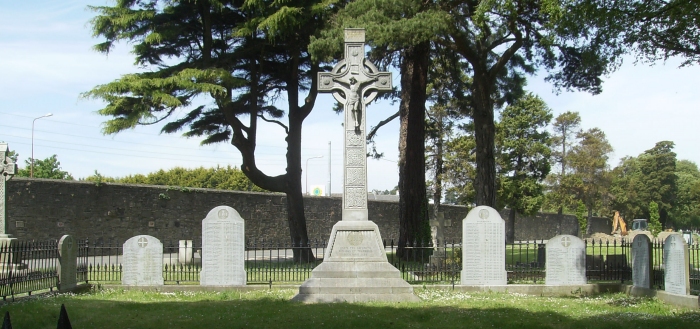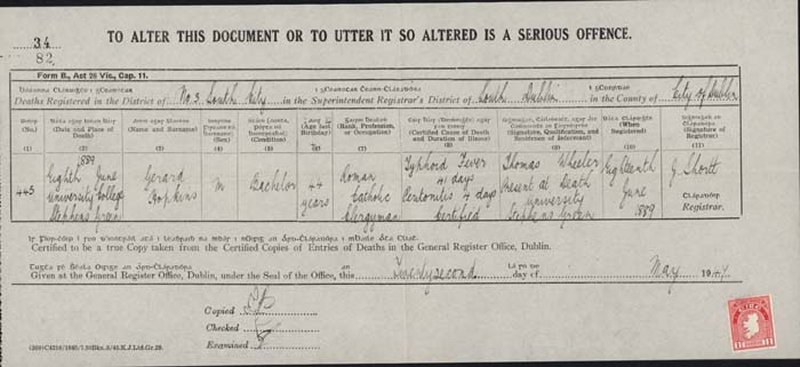Gerard Manley Hopkins: a Japanese Perspective
First published in Studies. An Irish Quarterly Review, 2 (1995)
Kazuyoshi Enozawa,Keio University,
Japan.
The Christian theology that informs all of Hopkins's poetry, rather than the English Language, is the main difficulty for Japanese who read Hopkins's poetry. Hopkins's unique way of looking at nature interests them most.
Not a few people in the English-speaking world who have read Hopkins 'The Wreck of the Deutschland' would own that they have found the whole stuff quite 'tough'; in some parts, even beyond comprehension. If such response is possible for English- speaking poetry-rreaders, it is not just possible, but - to put it more strongly - almost inevitable for their counterparts in the Far East, to whom English is not their native tongue. I mean Japanese readers of Hopkins's poetry. If their understanding and appreciation of that poetry is in any way limited, it is principally due to the fact that English is not a medium they are born to command, but one they have to master through assiduous learning. Language barrier, however, is not the sole factor by which the Japanese are handicapped in their approach to Hopkins's poetry.
What constitutes, in a sense, the greater difficulty for the Japanese is the Christian, or rather Ignation, theology that informs all of Hopkins's mature poetry. The majority of the Hopkins readership in Japan is non-Christian. For them, the patently Christian overtones in much of his poetry cannot help but work as a stumbling—block. However despite these major obstacles, there is observable among Japanese readers of Hopkins, a persistent interest in the language, if not the religion, of that Jesuit poet. They seem to be particularly interested in Hopkins's unique way of looking at scenes in nature.
The Japanese have for centuries retained their keen sensitivity to beauty in nature, and particularly because their power of appreciating beauty in their nature poetry has been nurtured by their literary tradition, notably the tradition of haiku, which was established by the seventeenth—century Zen-monk, Matsuo Basho. Since the length of a haiku (one-line verse) is limited to 17 syllables, a haiku maker has to depend much upon the technique of minimal wording for precision and concision. The result is expansion in suggestiveness. And this is the aim that Basho the Haiku master not only taught to his disciples but achieved with brilliant success himself.
Hopkins also was a poetic artist, whose aim, however, seems to have been different from Basho's. Hopkins aimed, above all else, at expressing the 'inscapes' of things in the world. Hence the 'oddities and obscurities' in Hopkins's use of language. Japanese readers are not daunted by these linguistic peculiarities in Hopkins. On the contrary, an increasing number of them are finding pleasure in trying to understand them.
The Haiku of Basho
Taka hitotsu
mitsukete ureshi
irago-zaki
* A slash ( / ) marks off two adjacent word—groups in a line.
This was beautifully translated into English by a Japanese scholar—poet, Professor Nobuyuki Yuasa. It goes like this:
By a singular stroke
Of luck, I saw
A solitary hawk circling
Above the promontory of Irago.
The genius of the translator saw that it would not do to put the one line of the original verse into the customary three lines. So he cleverly expanded the key idea in the original into four English lines. Why did the translator need four lines of English to translate a single-line Japanese verse? In order to understand his motive, we must note several key factors that make a haiku what it is.
The original Haiku
line contains just one verb and one adjective, which together constitute the middle word-group. The verb is mitsukete
, and the adjective is ureshi. As is usual with Japanese, there is no explicit word denoting the subject of the verb and the adjective. The implied subject is the pronoun 'I', as the Japanese reader judges immediately. Hence the 'I' in the English version. There is a cause-effect relation between the verb and the adjective, so that the meaning of the middle word-group in the original would be something like 'I was delighted to find . . .'
Any reader but the dullest would instantly sense the flatness of such a paraphrase. Poetry readers might recall the opening line of Wordsworth's Daffodils: 'My heart leaps up when I behold a rainbow'. To the mind of a Hopkins reader, that would come as a near enough equivalent the phrase 'My heart is hiding / Stirred . . .' What comes to me as a striking expression in Professor Yuasa's translation is the idiomatic 'By a singular stroke / Of luck, I saw . . .' The object of the poet's observation is of course a hawk, that is, Taka hitotsu. This phrase literally means 'just one hawk', or 'a single hawk'.
Again this paraphrase would look poor: it suggests in effect that there was no more than just one bird in flight. The translator obviously wanted to evoke some such emotion as 'loneliness' in the reader by deliberately choosing the emotive adjective 'solitary' instead of a mere numerical 'one' or 'single'. What then did the poet see a hawk doing? The original verse says nothing. It is left entirely to the reader's imagination to decide the supposed action of the bird. Here the translator has chosen a verb very appropriate to the scene: 'circle' in its (present) participial form 'circling'. Irago-zaki is simply a place name referring to 'the promontory of Irago'. Here again, one has a need to supply some appropriate preposition for the noun phrase irago-zaki. And the appropriate preposition within the context that comes most naturally alike to the translator and to the reader is 'over' or 'above' and there is no question about it.
The poem of Hopkins which describes much the same scene in the natural world would be 'The Windhover'. The opening lines of that sonnet is likely to charm the Japanese reader - no less perhaps than the Western reader:
The Windhover
I caught this morning morning's minion king-
dome of dayulight's dauphin, dapple-dawn-drawn
Falcon, in his riding
Of the rolling level underneath him stay air,
and striding
High there, . . . .
— lines 1—4).
The image of a 'Falcon' primarily as a medieval knight-errant charging forth on his horse and secondarily as a Christian knight battling with evils for the sake of his 'Lord' (meaning 'Christ') may well strike the Japanese reader as novel, unless he is (at least intellectually) versed with Western literature, both sacred and secular. But I think this is no great obstacle in the way of the Japanese reader trying to grasp the symbolic meaning of the sonnet.
The Japanese reader, without troubling his/her mind too much about the medieval/Christian overtones of these lines, can choose to conjure up in his/her mind the image of a falcon 'drawn by dapple—dawn' to the early morning sky, or 'drawn against the dapple-dawn (early morning) sky' which, in either case, immensely satisfies the Japanese taste for natural beauty. I may add here that the unusual syntax in the compound noun phrase 'the rolling level underneath him steady air' might bother the English-speaking reader, but not the Japanese reader who sees no problem in construing it as 'the air that is rolling but staying "level" and "steady" underneath him'.
From a comparison of these two poems (one by Basho the Haiku-maker and the other by Hopkins the sonnet-maker) we may see at a glance both similarity and difference between the two artists. Both see beauty in a bird in movement high up in the air, one in a hawk 'circling' and the other 'riding'. But the imagery of Hopkins's poem is more rich than that of Basho's. Hopkins presses its symbolic meaning more forcibly upon the reader, whereas Basho leaves much more to the imagination of the reader. Herein may be perceived a difference in poetic technique.
Notes
1. The Liturgy of the Hours. 4 vols. New York: Catholic Book Publishing Co., 1975.
2. Kyne, Mary Theresa
, Country Parsons, Country Poets: George Herbert and Gerard Manley Hopkins as Spiritual Autobiographers, Greensburg, PA: Eadmer Press, 1992 and Rachel Salmon, 'Prayers of Praise and Prayers of Petition: Simultaneity in the Sonnet World of Gerard Manley Hopkins' in Victorian Poetry 22, 1984, 383 — 406.
3.Martz, Louis L.
, The Poetry of Meditation, New Haven: Yale UP, 1954.
The Spiritual Exercises of St. Ignatius, trans. Luis J. Puhl, Westminster, MD: Newman Press, 1962. One might include, although Salmon does not specifically mention them, the Ignatian meditations geared toward making an 'election'.
Phillips, Catherine,
ed. Gerard Manley Hopkins: Selected Letters, Oxford: Clarendon Press, 1990.
MacKenzie, Norman H. A Reader's Guide to Gerard Manley Hopkins, Ithaca, NY: Cornell UP,
1981, p. 64.
Milward, Peter, S.J.
'Exclamations in Hopkins's Poetry', Renascence, 42.1-2 (Fall '89-Winter '90): pp. 111 — 18.


